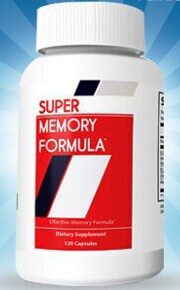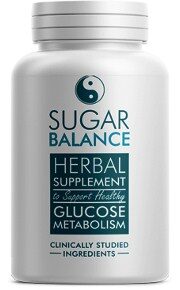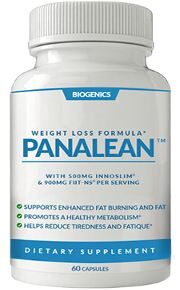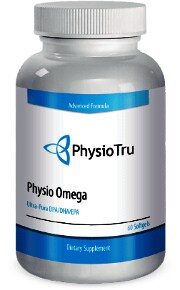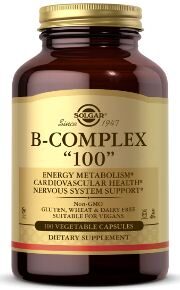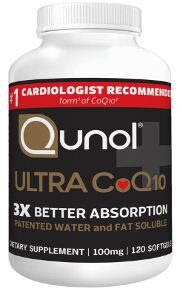If you are interested in knowing the answers to important questions about the human aging process and access to supplements to slow it down, I invite you to read this article.
Human aging is not an event, but a progressive process that affects our entire body and the ways in which we relate to others and adapt to environmental conditions.
I have structured the analysis of this process around several questions, taking into account the concerns of those interested in the subject and the contributions of the studies carried out by different researchers.
I begin with the analysis of the correct way to spell the word that designates the process.
| Start reading by the section of your interest |
| How do you spell aging or ageing? |
| What is the aging process in humans? |
| How do we age? |
| Where does aging begin? |
| Why do we age? |
| When does aging start? |
| Can aging be stopped? |
| Can aging be reversed? |
| Final notes |
How do you spell aging or ageing? [↑]
You may have had doubts about how to spell the word correctly, i.e. whether to use aging or ageing[1].
Both forms are correct, the first is most often used in American English and the second in British English.
The study found that the word aging has always been used more frequently than ageing in books published in American English.
What is the aging process in humans? [↑]
If we want to define the human aging process satisfactorily, we must determine a set of characteristics that express its essence and differentiate it from other processes.
♠ Deleterious character
The first characteristic of aging is its deleterious character, that is to say, the deterioration of the physiological functions of the tissues, organs and systems that make up our organism, making it more vulnerable to diseases.
Impairment of functional ability may also be used to describe some diseases, but aging is different from disease because it is universal.
Each disease affects only a number of people; aging has a universal character because it affects all the individuals of the species and all the systems of their organism.
Aging also resembles diseases in that it presents signs and symptoms because as we age we perceive the changes that occur in our body and these changes are also perceived by others.
♠ Multifactorial process
The second characteristic of this process is to be conditioned by a combination of multiple factors that together encompass biological, psychological and social aspects.
Among these factors, three very important types are recognized: 1) genetic factors, 2) factors associated with losses derived from health disorders accumulated throughout life (pathological factors) and 3) factors associated with the lifestyle that the person has led.

Genetic factors
The effect of the action of genetic factors is called primary, intrinsic, or physiological aging, while changes due to non-genetic factors are called secondary or extrinsic aging.
Genetic factors play a significant role in human aging process. Some researchers estimate that they can cause up to 25% of the changes that occur.
Non-genetic factors also play an important role. An example of this is the case of identical twins who age in different ways.
Pathological factors
The factors associated with losses due to health disorders accumulated throughout life produce so-called pathological aging.
These factors include accidents, surgical mutilations and illnesses suffered by each individual.
There are countless examples that show the influence of these factors. One well known is that people whose childhood or youth have suffered from tuberculosis are more likely to have a respiratory condition than those who have not suffered from this disease.
Another example of pathological aging is based on recent findings that Alzheimer’s disease is correlated with the herpes virus. In this case an illness of old age is associated with infection by a virus at an early age.
Factors associated with the lifestyle
The factors associated with a person’s lifestyle link their aging to the environment in which they have developed their lives, to their habits and customs and, in general, to the risks to which they have been exposed.
These factors include exposure to environmental pollution, inadequate eating habits, smoking, excessive consumption of alcoholic beverages, not sleeping the necessary hours, having been subjected to a prolonged stress regime and lack of physical activity.
♠ Progressive decrease in the capacity to adapt to the environment
A third characteristic of ageing consists of a progressive decrease in our capacity to adapt to the environment as an effect of the decrease in the functional capacity of organic systems.
♠ Personal character
A fourth characteristic of aging is its personal character: each person ages differently from the others. That is why it is an unrepeatable process to which we all aspire because we want to live.
♠ Increase in life expectancy with the development of society
The experience of the last 100 years shows that the development of societies brings with it an increase in life expectancy and therefore extends the period of aging of people by being able to live longer.
Life expectancy is the maximum period of time that a person’s life can last in the best possible situation.
Human aging definition
If we synthesize the ideas previously exposed we can define aging as the process that each person experiences in an unrepeatable way, which is conditioned by the combination of multiple factors that as a whole include biological, psychological and social aspects and it is characterized by the progressive decrease of the functional capacity of all the organic systems and of the capacity of adaptation to the environment.How do we age? [↑]
You may have been interested at some point in answering the question about how aging occurs in search of a description of the mechanism that causes us to age.
One answer to this question is offered by the free radicals theory of aging or the theory of oxidation, which has been extended to the theory of oxidation-inflammation.
Aging and oxidation
Oxidation is a chemical reaction in which one chemical species (atom, molecule, ion, etc.) yields electrons to another that picks them up. The species that gives up electrons is called a reducing agent and the one that captures them is called an oxidizing agent. In this case we say that the oxidizing agent is reduced and the reducer is oxidized.
This process of oxidation at the expense of electrons from chemical species of tissues of the human body damages them and causes us to age.
Currently the use of the adjective free is considered unnecessary to name the radicals, although it is still used in the theory that explains how we age.
Atoms are composed of a nucleus and one or more electrons attracted by it. Electrons are found in orbitals. In each orbital there can be more than one electron, but if for some reason there is only one electron, we say that this electron is unpaired.
In each atom there can be one, several or no unpaired electron. A radical (or free radical in traditional language) is a chemical species with at least one unpaired electron.
The existence of at least one unpaired electron in the radicals causes these species to seek electrochemical equilibrium by capturing electrons from nearby molecules. Consequently, they are unstable and short-lived chemical species.
When radicals oxidize other nearby chemical species, they can also cause them to become radicals because they are often left with unpaired electrons. In this way, although the radicals have a short-lived existence, they generate other radicals and so on.
Where do the radicals in the human organism come from?
An important part of the existing radicals in the human body contain oxygen and are produced in the cellular metabolism due to the necessary use of oxygen in the production of hormones, activation of enzymes, etc., that is to say, the organism itself produces agents that age it.
Other radicals are produced in inflammatory processes or come from the body’s response to environmental pollution, inadequate nutrition, tobacco smoke and ultraviolet rays.
How does the human body defend itself against oxidation?
The human organism contains a defense system against the action of free radicals. This system performs its functions in two ways.
The first way is based on preventing the formation of radicals through the action of specialized enzymes. The second way consists in the use of reducing agents to neutralize the already formed radicals. In the process of reduction these agents become radicals, but less harmful.
Examples of these reducing agents are some proteins contained in blood plasma and vitamins.
In addition to reducing agents produced by the body itself (endogenous), the human body uses exogenous antioxidants (vitamins, minerals and other nutrients) provided by some foods and antioxidant supplements.
But the body’s fight against excess radicals begins to give way from a certain age when the balance between radicals and the factors that prevent their formation or neutralization is broken. This imbalance leads to oxidative stress that leads to the deterioration of cell function or the death of cells.
Where does aging begin? [↑]
Another frequently asked question by those interested in human aging process is where this process begins.
The answer to this question is offered by the mitochondrial theory of aging which is a refinement of the free radicals theory of aging.
Continue reading because I’m going to explain in a simple way where aging begins.
The human embryo begins its development by a cell called the zygote until it becomes the complex organism we know. The zygote divides into two and the resulting two cells divide again and so on.
Differentiated cells
In the early stages of embryonic development cells do not have a specific function, but as this embryo develops over time there are cells that assume specialized functions which are called differentiated cells.
Examples of differentiated cells are the myocytes forming the muscles of the extremities, the thorax and the heart; the epithelial cells making up the skin, the white blood cells, the erythrocytes or red blood cells, the platelets, the ostiocytes forming the bones, the neurons and the cells of the germ line which are intended for the formation of ova or sperm. There are many other examples.
Differentiated cells that have a double copy of each chromosome are called somatic cells.
Most differentiated cells are somatic cells; only germline cells do not belong to this type.
Stem cells
The developing human embryo is not only composed of cells that specialize in one function, but also in its composition there are cells, called stem cells, that do not assume a specific function and maintain the ability to divide to form new stem cells or differentiated cells.
Once the human organism with all its functions has been formed, stem cells are still present in it, even in the adult organism there are cells of this type.
Differentiated cells and oxidation
Specialized cells differ from stem cells not only by their functions and ability to divide, but also by physiological characteristics such as shape, size, metabolic activity, polarity, and gene expression.
Differentiated cells, with some exceptions such as erythrocytes, are provided with nuclei and mitochondria.
A mitochondrion is a structure contained in the cytoplasm of a cell and its main function is to provide as much energy as possible for cellular respiration. Each mitochondrion is covered by two membranes.
Mitochondria have their own DNA, but most of their proteins originate in the cell nucleus.
A cell may have one or more mitochondria depending on how much energy it needs.
According to mitochondrial theory, aging begins in the DNA of the mitochondria of differentiated cells due to the oxidizing power of these radicals and the limited ability of these cells to divide.
Why do we age? [↑]
Another question you may have asked yourself is why aging occurs.
This question is related to how we age, but they differ in that the answer to how we age is the description of the mechanism that causes aging, while the answer to why we age is the explanation of the cause of this mechanism.
The answer to why we age is obtained if we incorporate contributions of evolutionary theories of aging to the free radicals theory of aging and mitochondrial theory.
According to some evolutionary theories, the reproductive age requires a greater functional capacity of the organism that demands a greater consumption of oxygen and this oxygen acts as the radical forming agent.
This DNA damage is cumulative and inexorable in the human species.
According to this approach, aging is a secondary effect of the vital activity that is generated for the reproduction of the species, that is to say, the cause of aging is determined by the need to conserve the human species at the expense of the individuals that make it up.
When does aging start? [↑]
You may have been curious to know if you’re getting old, even if you’re young. This type of concern is related to a much debated answer question about establishing when we begin to age.
There is no agreement among researchers about when human aging begins. Some say it starts when we are born, others say we begin to age when we reach reproductive age.
This last view agrees with the theory explaining the cause of human aging process, described in the analysis of the answer to the question about why we age.
Chronological, biological and anthropological age
There are studies according to which we all do not age at the same rate because in each person the factors of aging act differently because the genetic, pathological and environmental factors tend to be different in each case.
For this reason there is a need to differentiate chronological age from biological age. The first is defined as the years lived by a person and the second is determined by physiological functions.
In addition to the chronological age and the biological age of a person, we must consider the anthropological age as the age perceived by society and linked to the psychological factors of aging.
Study on changes in biological age
A team of researchers from Duke University, North Carolina, used a set of 18 physiological markers, including blood pressure and metabolic rate, to measure biological age and analyze changes in a group of about 1,000 people born in 1972 or 1973.
Measurements were performed three times on each participant at ages 26, 32, and 38.
The first measurement was made at age 26 because the research team argued that it was not possible to identify changes in the selected indicators at younger ages.
The study showed that changes varied from one individual to another. Interestingly, one participant had signs of a chronological age of 61 when he was 38.
Can aging be stopped? [↑]
One of the greatest aspirations of human beings for hundreds of years has been to stop aging, and today there are many researchers around the world working on this.
Despite the efforts made in research, we still cannot stop human aging; we can only slow it down with actions directed at some factors that condition this process.
Some scientists believe that if research continues at the current rate or it is accelerated, in about 25 years products will be available to stop human aging.
Can aging be reversed? [↑]
The difference between stopping and reversing aging is that the actions to stop it must be aimed at preventing us from aging, while reversing it means repairing the damage caused by the oxidative process and the diseases associated with cell deterioration.
Dr. Andrews, director of the Sierra Sciences Company[2], believes that the solution to the problem of aging and the diseases associated with it can be solved if a compound capable of lengthening telomeres is obtained.
Telomere is the repetitive region of DNA at the end of our chromosomes that promotes cell division. Cells cannot divide without telomeres.
Scientists have discovered that telomere activity is stimulated by telomerase, an enzyme present in germline cells, stem cells, and other human cell types.
Telomeres shorten as cells divide and there comes a time when cells can no longer divide.
If a compound were obtained that induced telomerase expression and lengthened telomeres long enough so that cells did not lose the ability to divide, a mechanism would be created that would evade cell oxidation and thus halt and reverse aging.
Dr. Andrews’ company has achieved a substance called TAM-818 which is capable of inducing telomerase expression by 16%, but a more potent substance is required to reverse aging.
The development of regenerative medicine including stem cell therapies, gene therapy and tissue engineering are currently available for the treatment of diseases associated with aging.
Alongside all these advances are actions in the area of nutrition and especially in the consumption of anti-aging supplements which include antioxidant supplements and vitamin supplements.
Final notes about human aging process [↑]
In this article I have analyzed the human aging process from the consideration of its most relevant aspects and the concerns of people interested in the subject.
I consider the answers to the questions about how and why we age to be very important in understanding the need for a healthy lifestyle and eating a healthy diet that can be supplemented with the best anti-aging supplements.
No less guiding are the answers to questions about whether we can stop or reverse aging because they relate to behavior to follow in lifestyle and eating.
If you think this article has helped increase your knowledge about human aging process, share it with your friends on social networks.
References:
1. ↑ Ageing. Wikipedia. https://en.wikipedia.org/wiki/Ageing
2. ↑ Sierra Sciences. https://www.sierrasci.com



